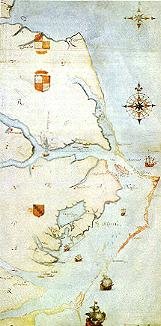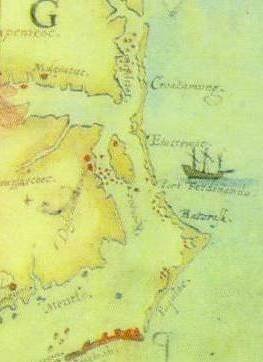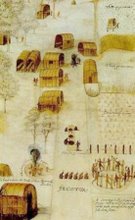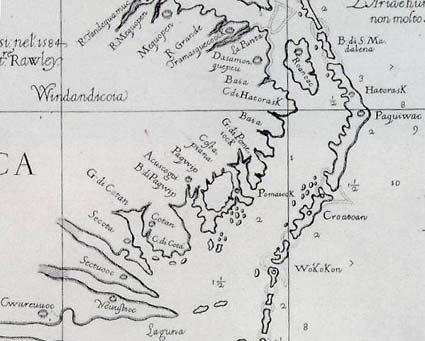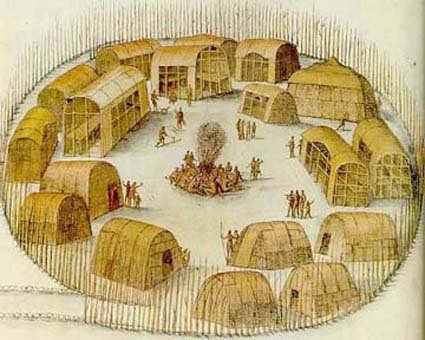BY ED BECKLEY | SENTINEL CORRESPONDENT
When doctors want to see a body's organs they use an magnetic resonance imaging machine (MRI) to view beautifully clear images of what's inside.
When archaeologists want to see what's below the surface of the earth they are now beginning to use a similar technology called computer-assisted radar tomography (CART).
An archaeologist with the First Colony Foundation was on site at Fort Raleigh Saturday with CART engineers testing the advanced ground penetrating system. Their hope is that CART will prove to be a viable tool to help find artifacts from Sir Walter Raleigh's 16th Century colonies in the future.
The First Colony Foundation comprises a team of top archaeologists who in recent years discovered the expanded Jamestown, Va. settlement. The group also is a partner with the National Park Service in search of the Elizabethan presence on Roanoke Island. It has dug its share of holes along Roanoke Sound the past couple of years.
http://obsentinel.womacknewspapers.com/articles/2008/01/23/top_stories/tops3441.txt
Tuesday, January 29, 2008
Lost Colony Dig; Probing the Past with Radar
Posted by
Historical Melungeons
at
1/29/2008 09:09:00 PM
![]()
Labels: advanced ground penetrating system, CART, fort raleigh, lost colony, radar tomography, Roanoke island
Monday, January 28, 2008
Search for Lost Colony takes a high-tech turn
By Catherine Kozak
The Virginian-Pilot©
January 28, 2008
An innocuous-looking golf course tractor pushing a platform on wheels could help illustrate the nation's oldest mystery.
In the quest for the Lost Colony, the vanished 1587 English settlement on Roanoke Island, archaeologists have conducted numerous explorations in Fort Raleigh National Historic Site, digging and surveying and scanning and scoping.
But they've never used high-tech radar tomography that can produce 3-D images out of data collected from 6 feet, more or less, under ground.
The refined technology, which can also use sound and light waves, gained early fame when inventor Alan Witten used it to help locate fossils from a 120-foot-long dinosaur - called "seismosaur us " - in the late 1980s in New Mexico. The find was fictionalized in Michael Crichton's "Jurassic Park."
"This is fantastic, cutting-edge technology," said Eric Klingelhofer, vice president of the First Colony Foundation, in a telephone interview. "I am eager to see the findings and then compare them with what we know of the archaeology of the site."
On a recent, rainy Saturday morning, Klingelhofer, who is a professor at Mercer University in Georgia, watched as a contractor with Witten Technologies drove the tractor back and forth in the parking lot and grass borders near the ticket booth at Waterside Theatre, where "The Lost Colony" outdoor drama is performed each summer.
"We're picking up the utilities, which is good, because that's what the equipment is designed to do," he said. "But we have picked up some anomalies, which is good."
The veteran archaeologist said the foundation, which has an agreement with the National Park Service to do archaeological investigations at the park, dug on the sound side of the parking lot in 2006. And in the 1990s, archaeologists dug between the earthworks and the theater. The hope, he said, is that Witten's technology, which is costing a couple of thousand dollars, can help pinpoint where significant anomalies, or irregularities, are located before the archaeologists touch a shovel.
http://hamptonroads.com/2008/01/search-lost-colony-takes-hightech-turn
Posted by
Historical Melungeons
at
1/28/2008 11:01:00 PM
![]()
Labels: Archaeology, fort raleigh, lost colony, north carolina, radar tomography, roanoke


